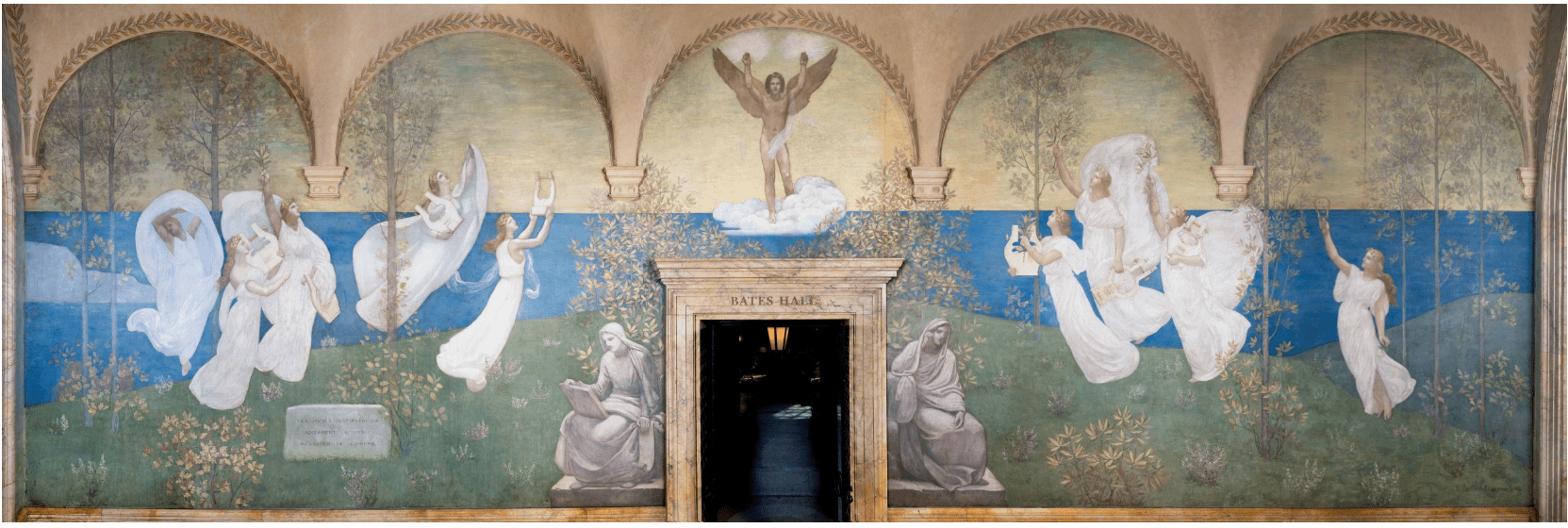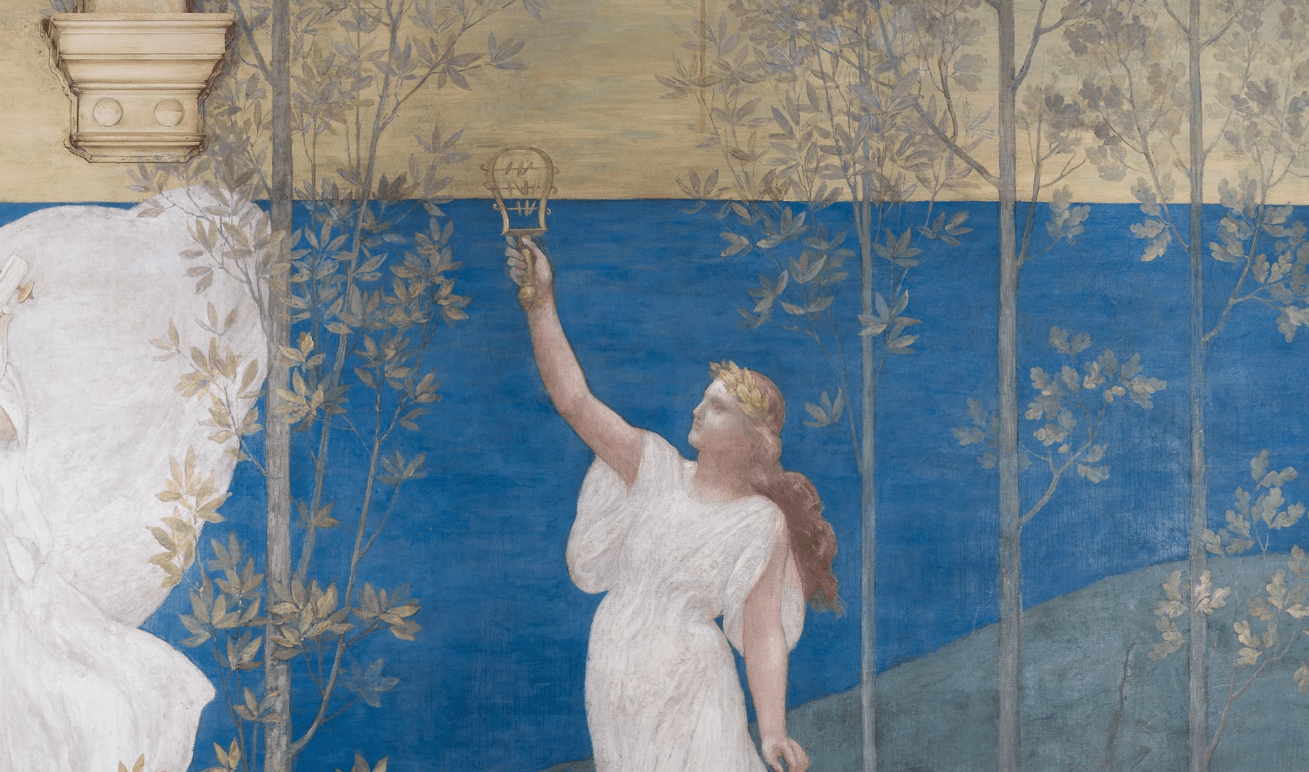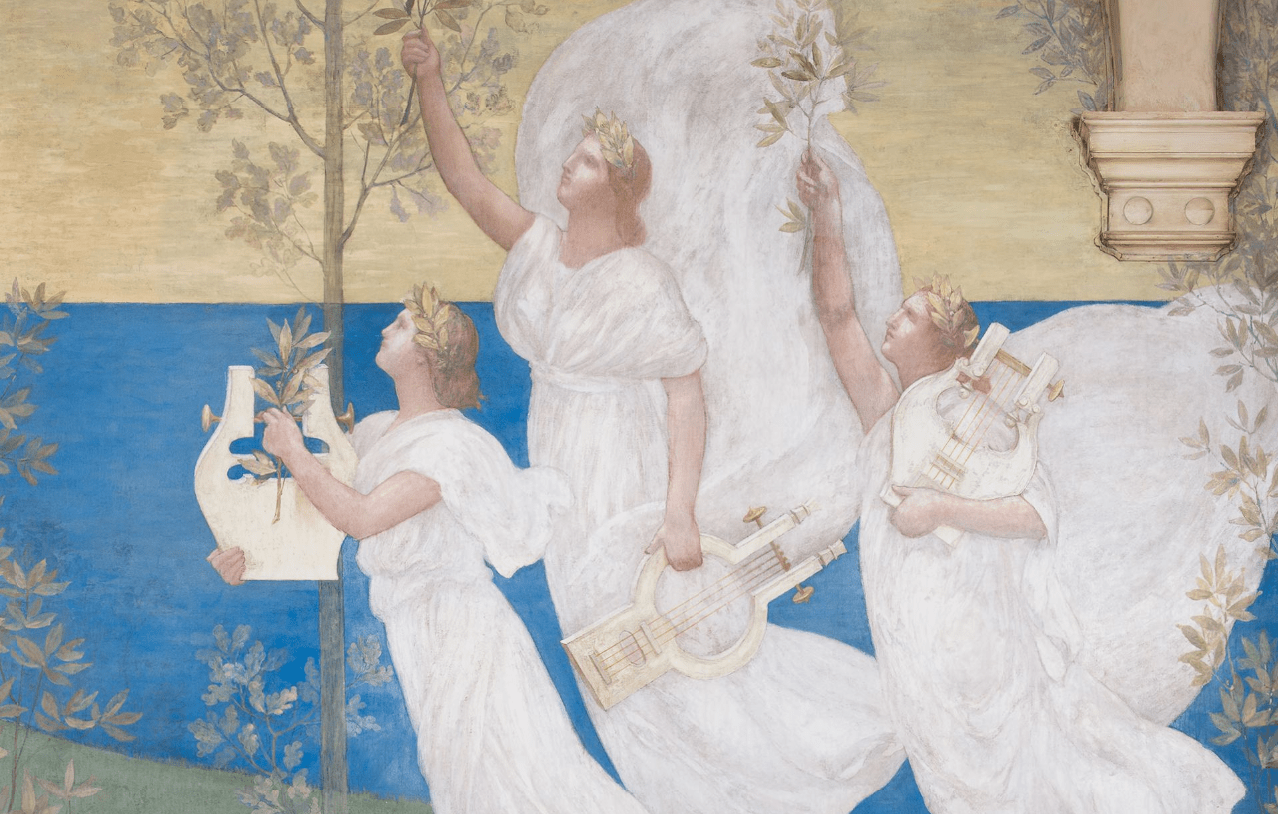You may have wandered past this panel, a part of the Puvis de Chavannes murals on the second floor of the Central Library's McKim Building, many times and wondered about the instruments the Muses are carrying. What are they, anyway?
The Seistron (or Sistrum)
The word "seistron" comes from the word "seio," which means to shake. This is appropriate, because that is how this percussion instrument is played. It is made from a spur or a horseshoe with a handle attached, and a number of crossbars that would have loose bits of metal or bells on them that would move and clatter against each other when the seistron was shaken. It is believed to have originated in Egypt where it was used in ceremonies to honor Isis.
But besides being used as a musical instrument, seistrons were also used as toys. There is written evidence that wet nurses would shake them to amuse babies under their care who wouldn't sleep.
The Kithara
The kithara is a type of lyre that is made from a wooden sound box with two arms on either side that support a crossbar on which the strings were attached. Artistic evidence has shown that kithara dating from the 8th century BCE were typically round-bottomed and had four strings, like the ones seen here. The square-bottomed type as seen here started appearing in the 6th century BCE, but would have more strings than the ones pictured here. It would seem that Puvis de Chavannes took some artistic license in creating these instruments for the Muses to play. Kitharas were typically used by professional musicians to perform concerts. This distinguishes them from lyra, the kind of lyre that has the same basic outline of shape (sound box and two arms supporting some strings), but is made with a turtle shell and not a wooden sound box. Lyras' sound didn't carry as far, so was more appropriate for informal gatherings and folk music.
Books
Music and Image in Classical Athens
Streamed Audio
The Greek Folk Instruments: Ancient Guitar [Kithara], opens a new window





Add a comment to: Ancient Instruments